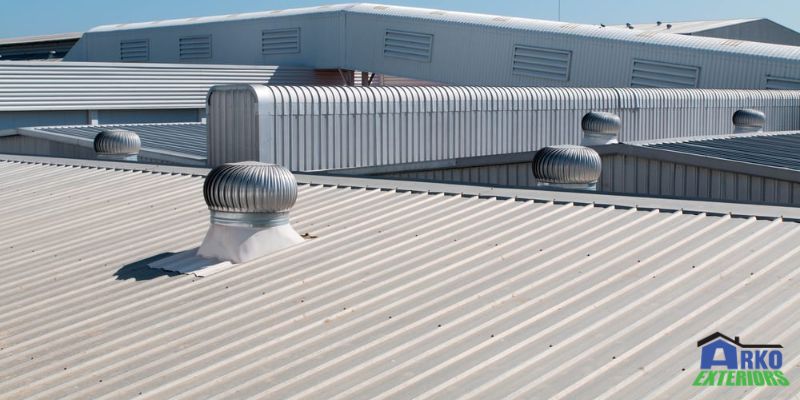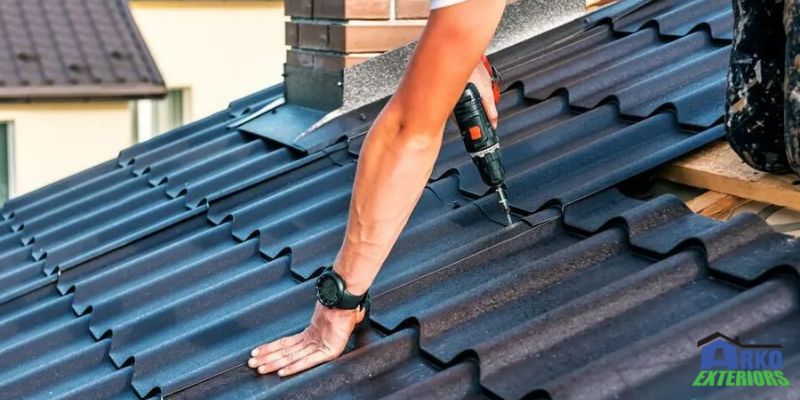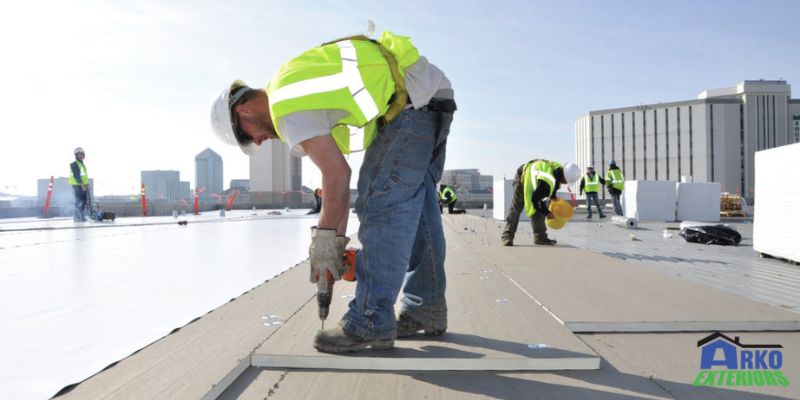When it comes to commercial and industrial buildings, selecting the right roofing option is crucial. Roofing plays a vital role in protecting the structure, ensuring the safety of occupants and maintaining the integrity of the building. However, with a multitude of roofing options available in the market, it can be challenging to determine the best choice for your specific needs. By understanding the pros and cons of each option available today, you can make an informed decision that meets your requirements. Here are some options…
#1 Built-Up Roofing (BUR)
Cost:
Built-Up Roofing (BUR) systems, also known as “tar and gravel” roofs, are among the most traditional options for commercial and industrial buildings. BUR roofs consist of multiple layers of bitumen and reinforcing fabrics, providing excellent waterproofing capabilities. In terms of cost, BUR systems can be moderately priced, making them a popular choice for budget-conscious projects.
Durability:
BUR systems offer good durability and have a lifespan of 20 to 30 years when properly installed and maintained. The multiple layers in BUR roofing provide enhanced protection against leaks and damage, making it suitable for buildings with heavy foot traffic or equipment installations on the roof. Regular maintenance, such as inspection and repair of any punctures or blisters, is essential to ensure the longevity of BUR roofing.
#2 Metal Roofing
Cost:
Metal roofing is widely recognized for its longevity and durability. Although the initial cost of installing a metal roof may be higher than other options, the long-term benefits often outweigh the upfront expenses. Metal roofs are available in various materials, including steel, aluminum and copper, each with different price points.
Durability:
Metal roofs are exceptionally durable and can last 40 to 70 years, depending on the material and proper maintenance. They are resistant to fire, rot and insect damage. Metal roofing is also known for its excellent performance in extreme weather conditions, such as high winds or heavy snow. Regular inspections and maintenance, such as clearing debris or addressing any loose fasteners, are essential to maximize the lifespan of metal roofs.
#3 Single-Ply Membrane Roofing
Cost:
Single-ply membrane roofing systems, such as TPO (thermoplastic olefin) and EPDM (ethylene propylene diene terpolymer), offer a cost-effective solution for commercial and industrial buildings. These systems consist of flexible sheets that are mechanically fastened or chemically adhered to the roof substrate.
Durability:
Single-ply membrane roofing provides good durability and has an average lifespan of 20 to 30 years. TPO and EPDM roofs are resistant to UV radiation, ozone and chemical exposure, making them suitable for buildings located in harsh environments. Proper maintenance, including periodic inspections and repairs of any punctures or seams, is necessary to ensure the longevity of single-ply membrane roofing.
#4 Modified Bitumen Roofing
Cost:
Modified bitumen roofing is a popular choice for flat or low-slope roofs on commercial and industrial buildings. These roofs consist of reinforced asphalt sheets that are layered and sealed together using heat or adhesives. Modified bitumen roofing offers moderate pricing, making it a cost-effective option for many projects.
Durability:
Modified bitumen roofing provides good durability and has a lifespan of approximately 20 to 30 years. The additional reinforcement in modified bitumen membranes enhances their resistance to punctures and tears, making them suitable for buildings with heavy foot traffic or potential mechanical damage. Regular inspections and maintenance, including sealing any cracks or repairing damaged areas, will help extend the lifespan of modified bitumen roofs.
#5 Green Roofing
Cost:
Green roofing, also known as vegetative or eco-roofing, involves the installation of living vegetation on the roof surface. While the initial installation cost of green roofs can be higher compared to other options, they provide a range of environmental and energy-saving benefits that contribute to long-term cost savings.
Durability:
Green roofs offer good durability and can last 40 to 50 years with proper maintenance. The vegetation layer provides natural insulation, reducing heating and cooling costs. Green roofs also help manage stormwater runoff, improve air quality and create an aesthetically pleasing environment. Regular maintenance, including irrigation, fertilization and weed control, is necessary to ensure the health and longevity of green roofs.
Summary:
Selecting the right roofing option for your commercial or industrial building requires careful consideration of both cost and durability. Each roofing option discussed in this article has its advantages and suitability based on specific project requirements. Whether you prioritize cost-effectiveness, longevity, environmental benefits or other factors, it is essential to consult with roofing professionals to assess your needs accurately. By making an informed decision, you can ensure the longevity, integrity and protection of your commercial or industrial building.
Remember, choosing the appropriate roofing system is a complex decision that should consider various factors beyond cost and durability. Factors such as local climate, building codes, energy efficiency and maintenance requirements also play a significant role in determining the optimal choice for your specific project.



